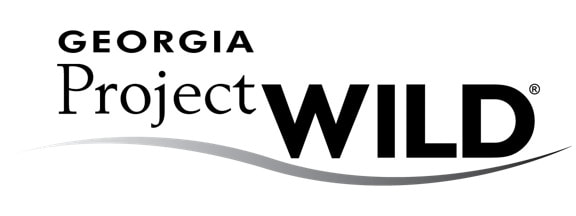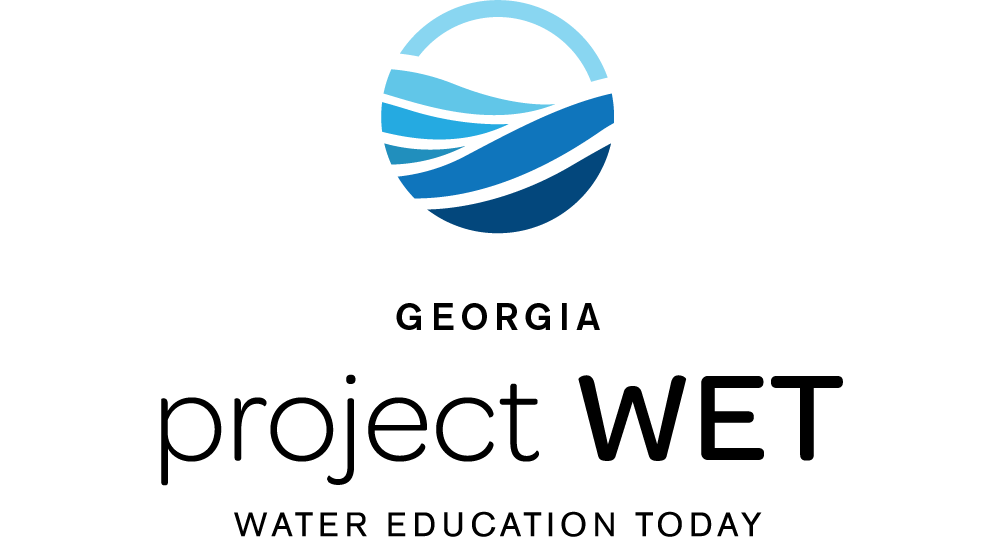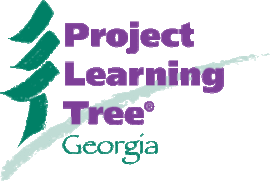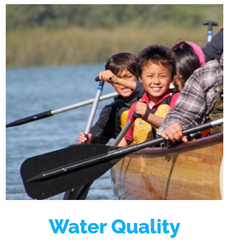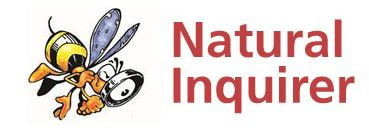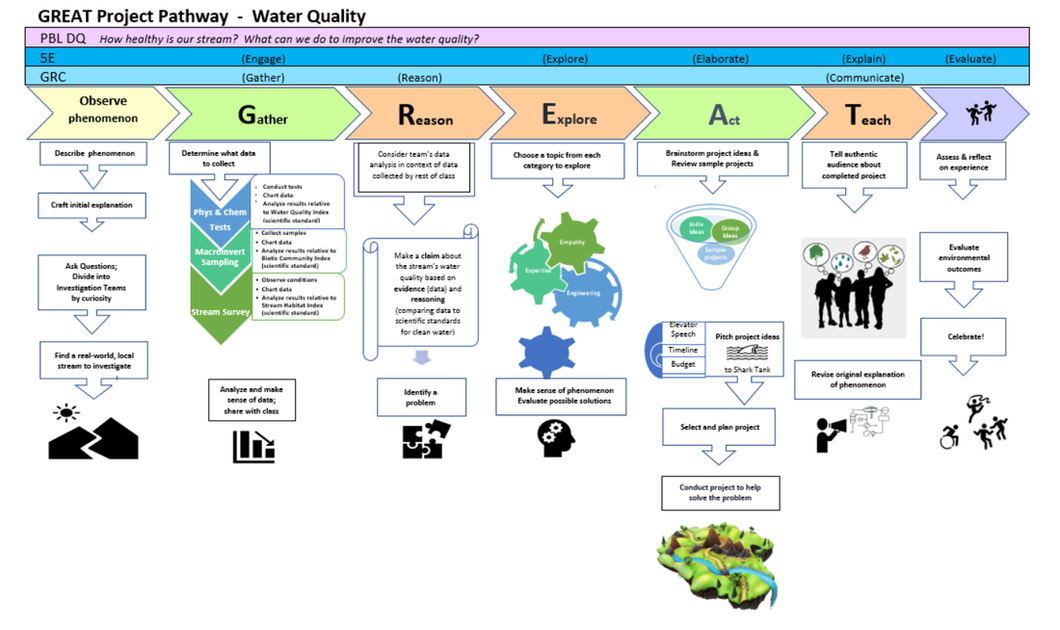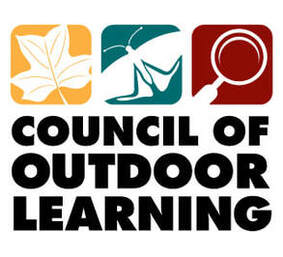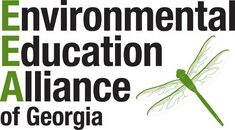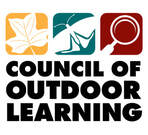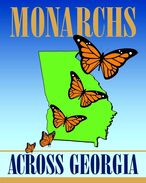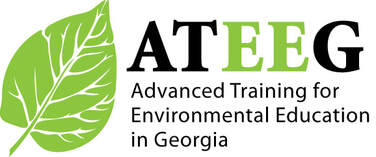Environmental Education Alliance of Georgia
- Our Story
- Our Team
- Our Events
-
Our Resources
- Wildlife Viewing
- Earth Month Activities
- Garden-based Learning
- EcoEngineering Challenges
- Community (Citizen) Science
- Phenomenon-Based Learning
- Problem-Based Learning
- Place-Based Learning
- Project-Based Learning
- Teaching about Climate Change
- Teaching about EJ
- Zero Waste Heroes
- SAGES Project
- Virtual EE Resources
- Environmental Clubs
- Evaluation and Assessment
-
Our Work
- Our News
- Our Impact
- JOIN or GIVE
- Member Portal
- Contact Us
- Outdoor Learning Store
- PassTick2023-4
- Annual Report
- New Page
- Past 2022 EEA Conference
- Past EEA Board 2021-22
- Past 2022 conferenceoverview
- Non-clickable Page
- New Page
- EEA Guest Blog
- Our Story
- Our Team
- Our Events
-
Our Resources
- Wildlife Viewing
- Earth Month Activities
- Garden-based Learning
- EcoEngineering Challenges
- Community (Citizen) Science
- Phenomenon-Based Learning
- Problem-Based Learning
- Place-Based Learning
- Project-Based Learning
- Teaching about Climate Change
- Teaching about EJ
- Zero Waste Heroes
- SAGES Project
- Virtual EE Resources
- Environmental Clubs
- Evaluation and Assessment
-
Our Work
- Our News
- Our Impact
- JOIN or GIVE
- Member Portal
- Contact Us
- Outdoor Learning Store
- PassTick2023-4
- Annual Report
- New Page
- Past 2022 EEA Conference
- Past EEA Board 2021-22
- Past 2022 conferenceoverview
- Non-clickable Page
- New Page
- EEA Guest Blog
COUNCIL OF OUTDOOR LEARNING
Methods and Models
What does outdoor learning look like? And how can successful models be replicated without "recreating the wheel?" This section of the toolkit offers suggestions, resources, and models for taking the plunge into outdoor learning with the least risk and the most to gain.
Overcoming Obstacles to Teaching Outside
Overcoming Anticipation of Misbehavior
One of the biggest obstacles to taking students outside is the perception of difficulties with classroom management. Educators are often reluctant to engage students outdoors because they fear being able to keep students on-task in such a setting. Preparation, organization, and communication are key to success. When a teacher or environmental educator has a plan and students have a clear understanding of the expectations, the results can be more effective than a similar lesson conducted in the classroom -- especially for struggling students. This document contains some basic strategies for managing students outside. Many thanks to Jerry Hightower and the late Petey Giroux for documenting their top tips for managing students outdoors.
Your browser does not support viewing this document. Click here to download the document.
Click below to download "Tips and Techniques"
| tips-and-techniques-for-teaching-outdoors.pdf | |
| File Size: | 16293 kb |
| File Type: | |
Overcoming Educators' Fears & Concerns
Both teachers and students can have concerns about going outdoors to learn. These may range from safety to fear of looking foolish. The best way to overcome such fears is to name them and address them. Surveys and professional learning sessions can allow teachers to feel comfortable speaking out and working together to identify solutions so that they feel prepared to teach outside. Walkie talkies or cell phones can provide assurance that help is close-by, if needed. Some schools have been successful organizing Earth Parents and Grandparents who are available to go out with a class so that the teacher has assistance.
If allowed to administer first aid, teachers may want to have a fanny pack, fishing vest, or apron that contains bandaids, cleansing wipes and injectors for children with known allergic reactions. Being able to recognize and avoid poison ivy, fire ants, and other other hazards can reduce anxiety and lower risks. Faculty tours of outdoor learning areas with a local expert can also help teachers feel prepared and confident when they later take students outside to learn. Use of free apps such as SEEK and iNaturalist relieve teachers of the unreasonable expectation that they should be experts on everything before taking students outside.
If allowed to administer first aid, teachers may want to have a fanny pack, fishing vest, or apron that contains bandaids, cleansing wipes and injectors for children with known allergic reactions. Being able to recognize and avoid poison ivy, fire ants, and other other hazards can reduce anxiety and lower risks. Faculty tours of outdoor learning areas with a local expert can also help teachers feel prepared and confident when they later take students outside to learn. Use of free apps such as SEEK and iNaturalist relieve teachers of the unreasonable expectation that they should be experts on everything before taking students outside.
Overcoming Students' Reluctance
Students and parents may be uncomfortable with outside learning for a number of reasons. Provide clear communication with families, including advance notice and information about the purpose of upcoming outdoor learning activities. One elementary school teacher sends students home wearing a leaf on a string to signal that the class will be going outdoors the next day.
It is worthwhile to ask about specific concerns, so they can be addressed. For instance, some children are reluctant to participate in an activity where their shoes might get messed up. Pull-over booties might be a good solution to have on hand. Other students may not have rain gear for inclement weather. A classroom set of ponchos can help. Sharing information with families about the value of students making sense of phenomena they observe outdoors and making real world connections to the curriculum, may help overcome parent concerns about the value of spending class time outside. It is as important to be aware of culturally-inherited perceptions and lived experiences that have left some people feeling unwelcome or out of place in natural areas, as it is to recognize that some students have deep familial or cultural connections to the environment.
It is worthwhile to ask about specific concerns, so they can be addressed. For instance, some children are reluctant to participate in an activity where their shoes might get messed up. Pull-over booties might be a good solution to have on hand. Other students may not have rain gear for inclement weather. A classroom set of ponchos can help. Sharing information with families about the value of students making sense of phenomena they observe outdoors and making real world connections to the curriculum, may help overcome parent concerns about the value of spending class time outside. It is as important to be aware of culturally-inherited perceptions and lived experiences that have left some people feeling unwelcome or out of place in natural areas, as it is to recognize that some students have deep familial or cultural connections to the environment.
Building Capacity to Teach Outdoors
Soliciting ideas and suggestions, creating a master plan, and investing in professional learning for teachers can bring great returns in terms of preparing for outdoor learning and ensuring program sustainability. When in doubt, build capacity before infrastructure. Well-prepared and confident teachers are a greater asset than amphitheaters and pavilions.
Invest in Professional Learning
This short film shows how Ford Elementary School combined forces with Captain Planet Foundation to host a conference on garden-based learning. Because the conference took place at their school, all the teachers got free training. The event gave the Ford teachers momentum for getting their school gardens in top shape. The school also had a chance to showcase its outstanding STEM aquaponics project, Native American gardens, World War II victory gardens, and other outdoor learning programs to educators from around the state.
This short film shows how Ford Elementary School combined forces with Captain Planet Foundation to host a conference on garden-based learning. Because the conference took place at their school, all the teachers got free training. The event gave the Ford teachers momentum for getting their school gardens in top shape. The school also had a chance to showcase its outstanding STEM aquaponics project, Native American gardens, World War II victory gardens, and other outdoor learning programs to educators from around the state.
Get Certified in Project Wild, Project WET, and/or Project Learning Tree
These professional learning programs provide curriculum and build confidence for teaching outside. Fees for day-long training include the cost of a curriculum book and supplies — typically $35 per person. Whole school trainings can be arranged on site. The sample lessons below are available for free to everyone, regardless of whether certified to teach Wet, Wild, or Learning Tree.
These professional learning programs provide curriculum and build confidence for teaching outside. Fees for day-long training include the cost of a curriculum book and supplies — typically $35 per person. Whole school trainings can be arranged on site. The sample lessons below are available for free to everyone, regardless of whether certified to teach Wet, Wild, or Learning Tree.
Partner with EE Professionals
|
Another way schools can build capacity is by partnering with local environmental education (EE) professionals. For example, the Chattahoochee Riverkeeper and Elachee Nature Science Center are two EE providers in Georgia that partner to offer immersive field trips that get students out in nature, conducting field investigations.
In-school visits by EE providers can bring nature to the classroom. With topics that range from wildlife rehabilitation to habitats, food webs and indigenous technology, EE providers can enrich and supplement classroom learning, when field trips are not possible. |
|
Start with Easy Gateway Activities: Here are 3 Tried & True Projects
Teachers who are not yet experienced in outdoor learning may want to start with one of these three "gateway" approaches, which are easiest to initiate and likely to produce effective results.
1. Garden-based Learning

The least intimidating of all outdoor learning activities, teachers are usually somewhat familiar with gardens and comfortable engaging students in planting activities. Pollinator gardens, rain gardens, vegetable gardens, hydroponics and aquaponics provide exciting opportunities for students to design solutions to environmental problems such as the need to encourage healthy eating, loss of pollinator habitat, poor drainage, food deserts, polluted run-off from farming, and space constraints for growing food.
Garden planning, soil testing, research, and investigation is as important for student learning as planting, harvesting, or measuring. Gardening can be made more student-driven by allowing children "voice and choice" in deciding what to plant, where, and how. Below are links to a toolkit for starting a vegetable garden, and for University of Connecticut's Rain Garden Planner. Rich with math calculations, soil permeability testing, outdoor exploration, water quality monitoring, and native plant research, students who design and install gardens apply a wide range of knowledge to solve real-world problems.
Garden planning, soil testing, research, and investigation is as important for student learning as planting, harvesting, or measuring. Gardening can be made more student-driven by allowing children "voice and choice" in deciding what to plant, where, and how. Below are links to a toolkit for starting a vegetable garden, and for University of Connecticut's Rain Garden Planner. Rich with math calculations, soil permeability testing, outdoor exploration, water quality monitoring, and native plant research, students who design and install gardens apply a wide range of knowledge to solve real-world problems.
2. Schoolyard Investigations
|
Scientists whose work requires more evidence than they can collect alone, may call on volunteers to "crowd-source" additional data. Students can contribute to authentic research and participate in real-world science by conducting field investigations for community (or citizen) science projects.
A Biodiversity Blitz is an easy way to start with community science. After watching the "Your Backyard Wilderness" film, students will wonder what lives in their schoolyard, and can use the SEEK app to observe, document findings, and earn digital badges while investigating outdoors. SEEK User and Teacher Guides are available, as well as directions for conducting a Biodiversity Blitz. |
|
Additional resources for teaching Your Backyard Wilderness, including Family Fun Guides for backyard exploration and links to download the SEEK app, can be found here. Teachers may ask for permission to show the film to their class or school for free, using this screening request.
|
SEEK Teacher Guide
|
SEEK User Guide
|
3. Water Quality Testing
|
One of the most exciting and relevant projects for young scientists is to monitor the quality of water in a nearby creek. Testing physical and chemical properties of the water can determine whether nutrients or pollutants are present in unhealthy quantities. Students can collect macroinvertebrate larvae from the creek bottom to see if there is an excess of pollution-tolerant critters or a shortage of pollution-sensitive ones. Like the proverbial canaries in the coal mine, the presence of certain macroinvertebrates reveals whether a creek is clean and healthy or contaminated and unhealthy. Check out these resources from Captain Planet Foundation that scaffold project-based learning related to physical or biological monitoring of water quality.
|
Key Instructional Strategies for Outdoor Learning: The four PBLs
Three great instructional strategies all go by the acronym PBL: Phenomenon-Based Learning, Project-Based Learning, and Problem-Based Learning. Find out how to distinguish between these approaches and see how they fit into outdoor learning and environmental education by checking out the descriptions and examples below.
1. Phenomenon-Based Learning
Learning outdoors offers many opportunities to let students observe phenomena and try to make sense of things for themselves. This explore-before-explain approach deliberately avoids teaching vocabulary in advance, or telling students what they are going to learn, in favor of immersing them in unexplained experiences. After observing a phenomenon, students ask questions, generate ideas, design models, conduct investigations, and offer tentative explanations — all before the teacher-directed portion of the lesson begins. The Georgia Standards of Excellence in Science were designed to be taught this way.
Check out the film below, which shows teachers learning how to integrate phenomenon-based learning with environmental education, and then click the button below the film to discover the Georgia Science Teachers Association's Phenomenon Bank.
Learning outdoors offers many opportunities to let students observe phenomena and try to make sense of things for themselves. This explore-before-explain approach deliberately avoids teaching vocabulary in advance, or telling students what they are going to learn, in favor of immersing them in unexplained experiences. After observing a phenomenon, students ask questions, generate ideas, design models, conduct investigations, and offer tentative explanations — all before the teacher-directed portion of the lesson begins. The Georgia Standards of Excellence in Science were designed to be taught this way.
Check out the film below, which shows teachers learning how to integrate phenomenon-based learning with environmental education, and then click the button below the film to discover the Georgia Science Teachers Association's Phenomenon Bank.
2. Place-Based Learning
Place-based learning takes advantage of local culture, heritage and landscapes to provide rich experiential education for children. Promise of Place and David Sobel's provide information on how to engage students in discovery and exploration outside.
For older children, distant locations and exotic species are often the focus of learning about endangered species, human impacts, and ecosystem connections. But many of these concepts can be more effectively taught using local examples. That is because local examples increase relevance, immediacy, and engagement.
For older children, distant locations and exotic species are often the focus of learning about endangered species, human impacts, and ecosystem connections. But many of these concepts can be more effectively taught using local examples. That is because local examples increase relevance, immediacy, and engagement.
3. Project-Based Learning
Student-driven projects such as the one depicted in these Captain Planet Foundation films and lesson plans give students an opportunity to identify a problem, research solutions, design a response, and implement their ideas.
In the first example, middle school students responded to a fish kill in the bay of their small island by consulting with the scientists at the Kwiaht Center for the Historical Ecology of the Salish Sea. The scientists provided access to a lab where students compared the relative effectiveness of different mushroom species in digesting oil from oily run-off water in the bay.
The next example shows students removing an invasive plant species, marking the locations on GPS devices, collecting seeds from nearby native plants to grow in the school greenhouse, and returning six months later to plant the native seedlings in the areas where the invasive plants were removed.
Credit for both videos and lesson plans below: Captain Planet Foundation / This American Land
In the first example, middle school students responded to a fish kill in the bay of their small island by consulting with the scientists at the Kwiaht Center for the Historical Ecology of the Salish Sea. The scientists provided access to a lab where students compared the relative effectiveness of different mushroom species in digesting oil from oily run-off water in the bay.
The next example shows students removing an invasive plant species, marking the locations on GPS devices, collecting seeds from nearby native plants to grow in the school greenhouse, and returning six months later to plant the native seedlings in the areas where the invasive plants were removed.
Credit for both videos and lesson plans below: Captain Planet Foundation / This American Land
|
4. Problem-Based Learning
Case studies, research briefs, and hypothetical scenarios are key components of problem-based learning, which gives students a chance to use their critical thinking skills and creativity to analyze and solve real-world problems. The National Center for Case Study Teaching in Science, Data Nuggets, and Natural Inquirer all provide free resources that can be used for problem-based learning. Teacher guides and answer keys are available for a small fee from the first two sources. Natural Inquirer publishes a student research journal (your preference) at no charge. |
Storylines: A thematic approach
|
A storyline (example below) is a thematic sequence of investigations where students are clear about how each new learning activity helps them answer questions or solve problems the class is exploring. Storylines use anchoring phenomena to begin investigations and allow student questions to drive the "sense-making" process. Storylines have an overarching structure and contain teacher-directed lessons, but also engage students in using science and engineering skills to design and conduct their own learning.
|
To learn more about Storylines, explore these resources:
|
The Council of Outdoor Learning (CoOL) is an EEA initiative that focuses on the design, development, use, and sustainability of outdoor learning environments on school campuses. CoOL provides tips and techniques for those who want to create outdoor classrooms or learning stations, hosts an annual symposium to share resources and strategies for teaching outdoors, curates a collection of outdoor learning activities that are integrated with state standards, and provides professional learning workshops, resources and webinars for teachers and non-formal educators
|
|
Environmental Education Alliance, Inc.
P.O. Box 801066 | Acworth, GA 30101 EEA does not does not discriminate on the basis of race, color, national origin, sex, age, or disability in its program , activities, or employment. For more information on EEA's non-discrimination commitment click here . Grievance officer may be contacted at [email protected] |
Proudly powered by Weebly
|
